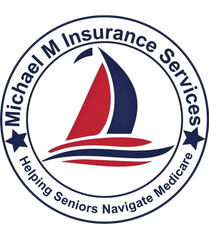Why this letter matters — and what to look for before you decide on a Medicare plan
Every September, Medicare beneficiaries enrolled in a Medicare Advantage plan or a Part D drug plan receive a document called the Annual Notice of Change (ANOC). It may look like just another piece of insurance paperwork, but don’t toss it aside — it’s one of the most
important letters you’ll get all year.
Your ANOC outlines what’s changing in your plan for the next year. Since those changes take effect January 1, reading your ANOC carefully is the first step in deciding whether to keep
your plan or shop around during the Annual Enrollment Period (AEP) .
Medicare plans are not static. Each year, insurance companies adjust their:
- Premiums
- Deductibles
- Copayments and coinsurance
- Prescription drug formularies
- Doctor and hospital networks
If you stay in your plan without reading your ANOC, you may be surprised by higher costs or lost coverage come January.
Why the ANOC Matters
When you open your ANOC, focus on these areas:
- Premiums and Deductibles
Check the monthly premium and annual deductible for 2026. Even small increases can add up over a year. - Prescription Drug Coverage
Look for changes to your formulary (the list of covered drugs). Are your medications still covered? Did they move to a higher cost tier? Also check your preferred pharmacies — sometimes they change from “preferred” to “standard,” which can mean higher copays. - Copayments and Coinsurance
Review how much you’ll pay for common services like:- Primary care and specialist visits
- Emergency room visits
- MRIs, CT scans, or other imaging
- Hospital stays
- Doctor and Hospital Networks
Medicare Advantage plans have networks. If your doctor or hospital leaves the network in 2026, you could be on the hook for higher costs — or have to switch providers. - Extra Benefits
Look at “extras” like dental, vision, or hearing. Some plans expand these benefits, while others reduce them. Make sure the benefits you use most are still included.
What to Look for in Your ANOC
What to Do After Reading Your ANOC
- If the changes are minor: You may decide to stay put.
- If costs go up or coverage shrinks: Compare other plans during AEP.
- If you’re unsure: Gather your list of doctors and medications, then talk with a trusted broker who can compare plans side by side for you.
Key Takeaway
Your Annual Notice of Change is your early warning system. By reviewing it carefully, you’ll know whether your plan will still meet your needs in 2026. And if it doesn’t, you’ll have plenty of
time during AEP to make a change.
The smartest move? Set aside time with your broker to go over your ANOC. Together, you
can decide whether it makes sense to stay with your plan — or switch to one that better fits your
health and budget.

